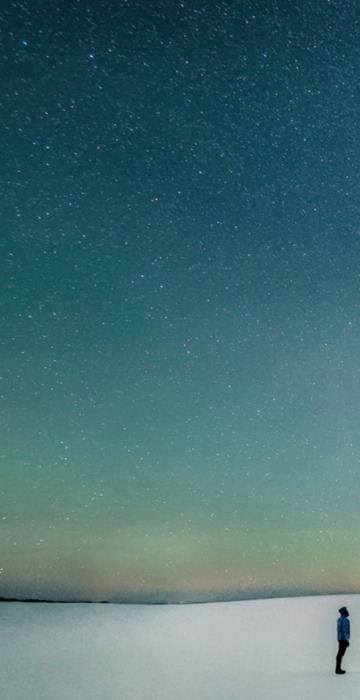
Science News
Astronomy Photographer of the Year 2013
Sample breathtaking images of space and the night sky from the Royal Observatory Greenwich’s 2013 competition.
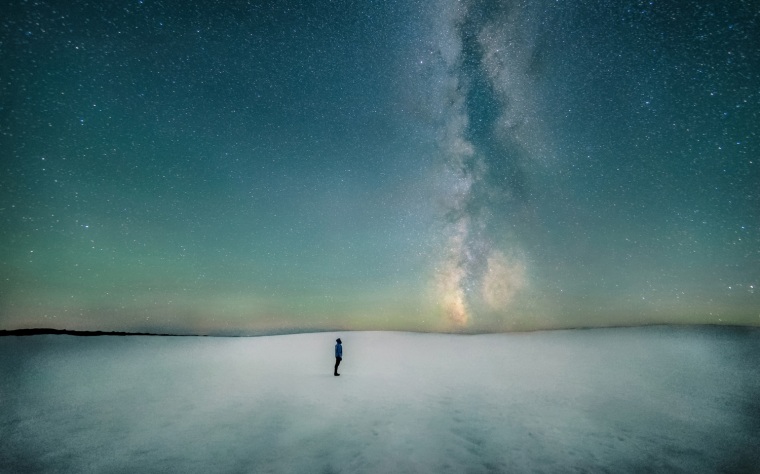
Gazing at the heavens
The Royal Observatory Greenwich's Astronomy Photographer of the Year competition highlights stunning pictures of the cosmos in five categories, with a couple of special prizes added in. More than 1,200 entries were received from 49 countries for 2013's contest. Here are the top images for 2013.
This photo by Ben Canales of the U.S., titled "Hi.Hello," was the runner-up for "Special Prize: People and Space." Appearing like a column of smoke rising from the horizon, a dark lane of dust marks the plane of the Milky Way.
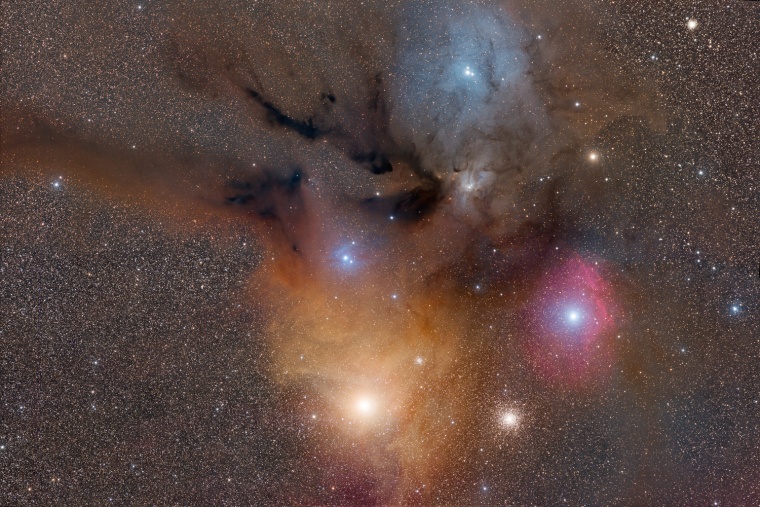
Smoky vision
"Rho Ophiuchi and Antares Nebulae" by Tom O'Donoghue of Ireland was the runner-up in the Deep Space category. The smoky appearance of the dust clouds in this image is fitting, since the grains of dust which make up the nebula are similar in size to particles of smoke here on Earth.
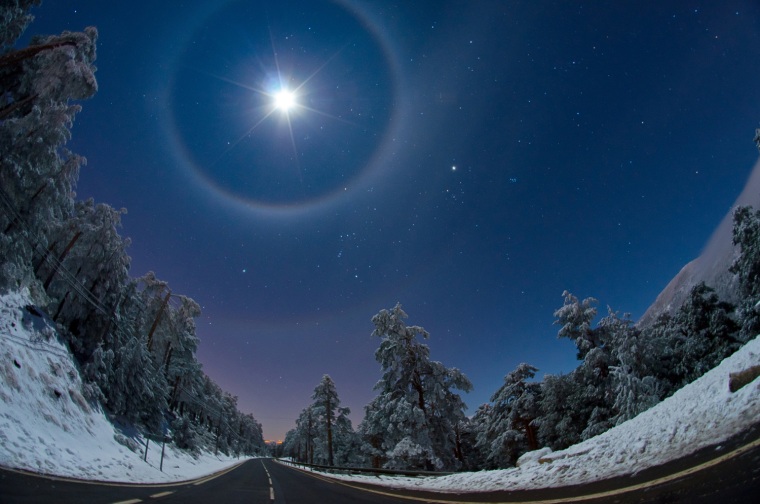
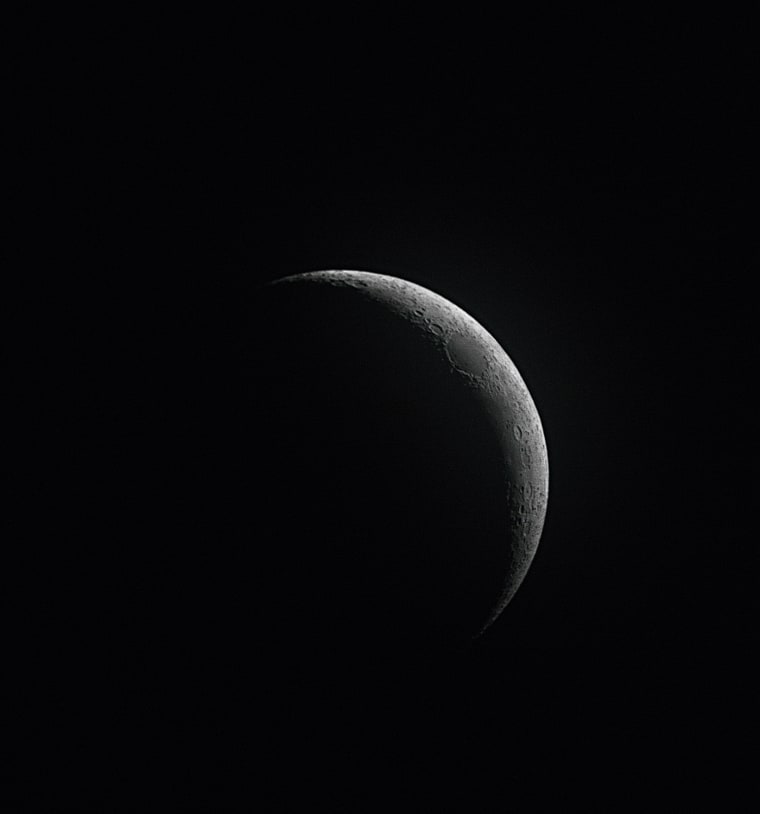
Waxing crescent
"Waxing Crescent Moon" by 14-year-old Jacob Marchio of the U.S. was "highly commended" in the Young Astronomy Photographer of the Year category. The moon seems to be emerging from interplanetary darkness, and Marchio has captured the contrast between the dark lava-filled lunar "seas" and the mountainous southern highlands.

Floating metropolis
"Floating Metropolis - NGC 253" by Michael Sidonio of Australia was 'highly commended' in the Deep Space category. First discovered by astronomer Caroline Herschel in 1783, NGC 253 is a rare example of a "starburst galaxy," with new stars being formed at many times the rate in our own galaxy, the Milky Way. Its mottled appearance comes from extensive lanes of dust which thread through the galactic disk.

Golden Gate panorama
"Goodbye Sun, Hello Moon" by 10-year-old Ariana Bernal of the U.S. was the runner-up in the Young Astronomy Photographer of the Year category. The awesome scale presented in this image depicts three of the most significant objects in the Universe. The sun and moon, each seen on the horizon, play an important role to us on Earth. The third object is Earth itself, and here its land, sea and sky meet around San Francisco’s Golden Gate Bridge.
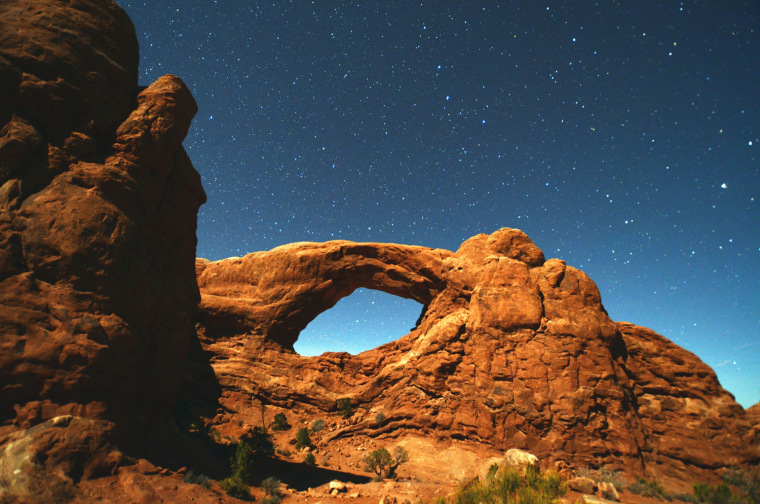
Bright desert night
"The Windows District" by 15-year-old Eric Dewar of Canada was "highly commended" in the Young Astronomy Photographer of the Year category. By keeping the camera shutter open, Dewar gathers precious light, making the desert scenery seem as bright as day. But the stars in the blue sky give the game away, revealing that this dramatic photograph was actually taken in the middle of the night.
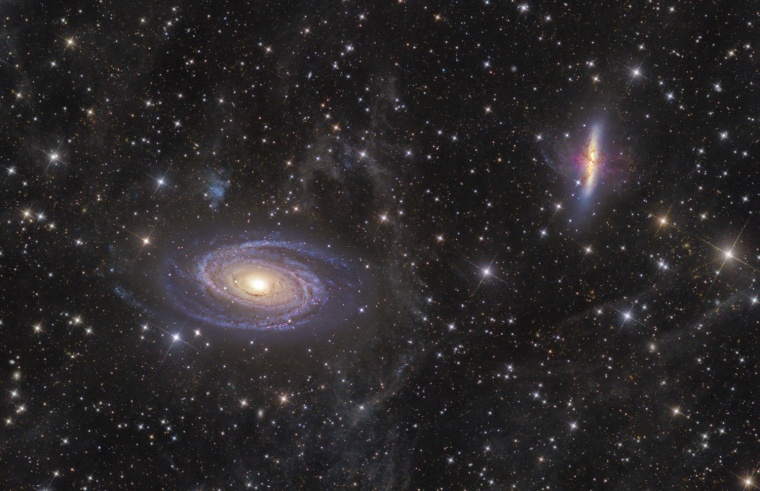
Space neighbors
"M81-82 and Integrated Flux Nebula" by Ivan Eder of Hungary was "highly commended" in the Deep Space category. Twelve million light years from Earth, M81 and M82 are galaxies with a difference. Close encounters between the two objects have forced gas down into their central regions. In M81, this influx of gas is being devoured by a supermassive black hole. In M82, the gas is fueling a burst of star formation that sends clouds of hydrogen (shown in red) back out into space.
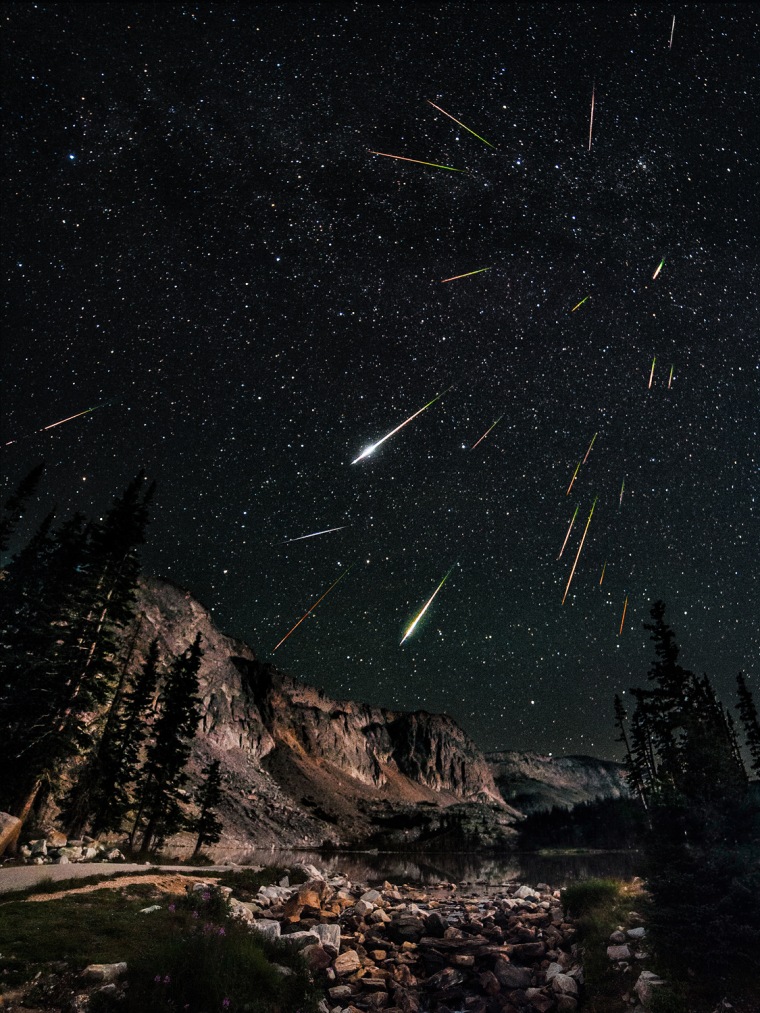
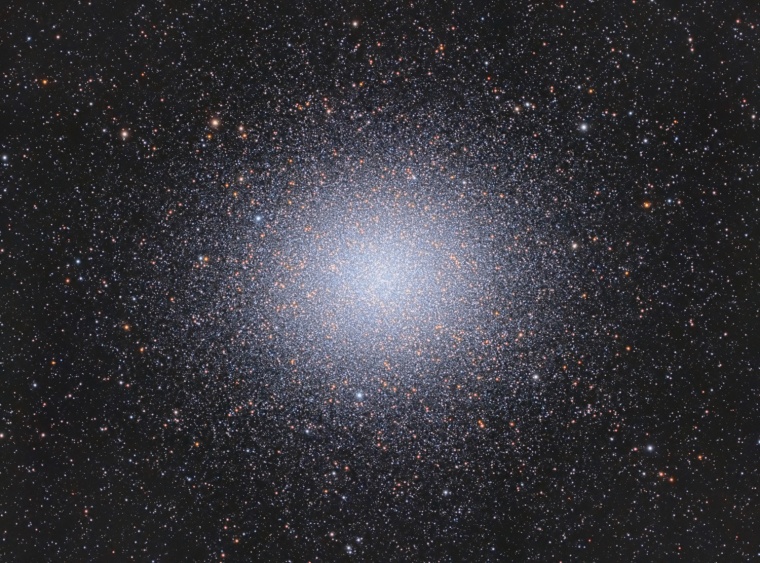
Star cloud
"Omega Centauri" by Ignacio Diaz Bobillo of Argentina was "highly commended" in the Deep Space category. Omega Centauri is a globular cluster, a spherical cloud containing several million stars that is thought to have formed billions of years ago. The cluster was first noted by the astronomer Ptolemy almost 2,000 years ago and cataloged by astronomer Edmond Halley in 1677.
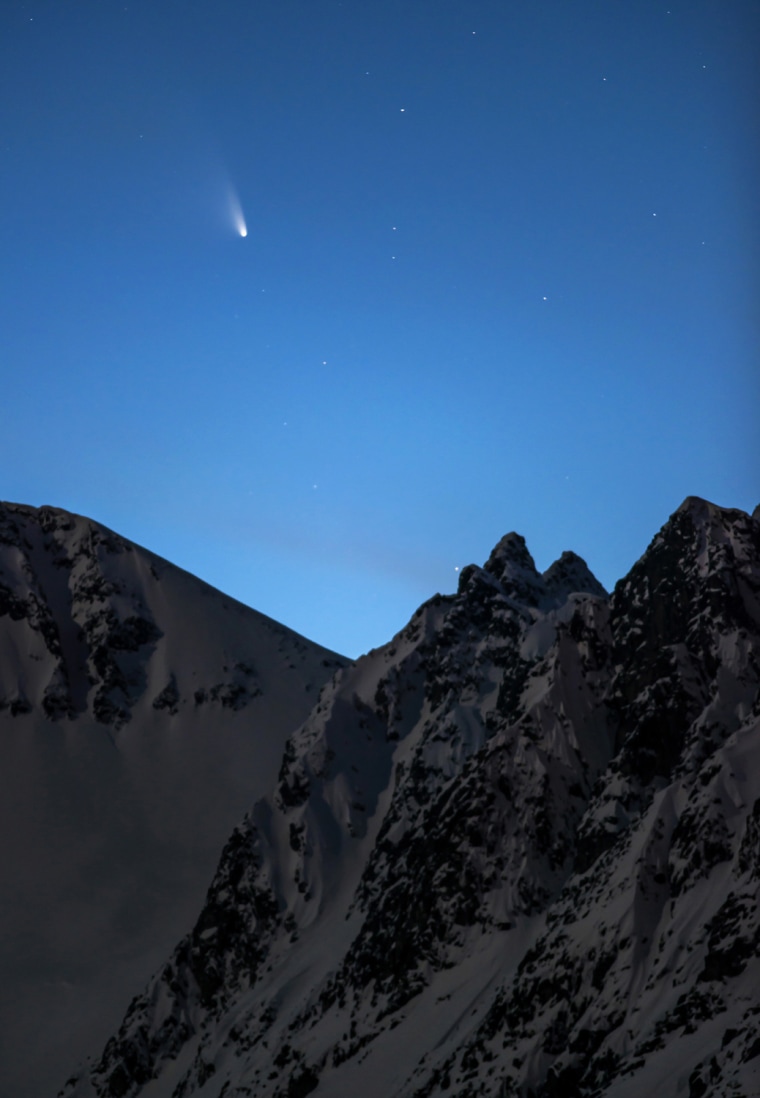
Icy visitor
"Icy Visitor" by Fredrik Broms of Norway was "highly commended" in the Earth and Space category. Like the snowy mountains in the foreground, the nucleus of Comet PanSTARRS is composed largely of ice and rock. The nucleus itself was just a few miles across, but as it neared the sun in early 2013, ice evaporating from the surface formed a tail of gas and dust hundreds of thousands of miles long.
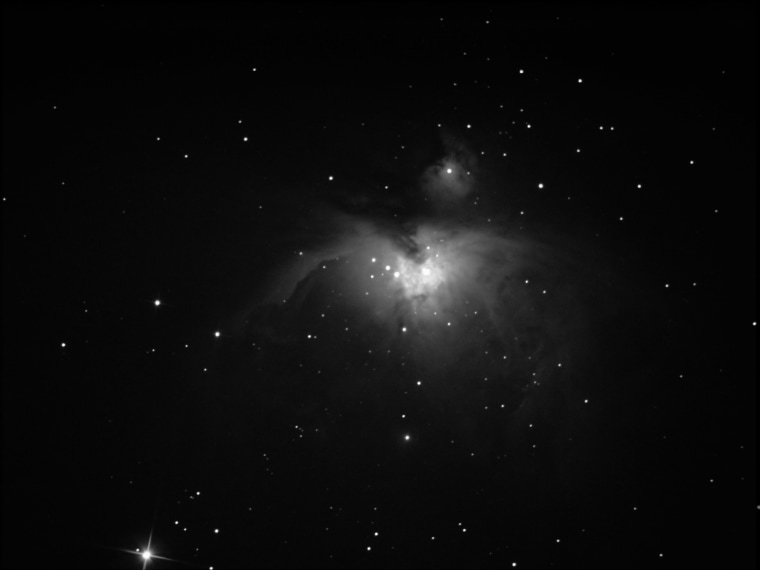
The Great Nebula
"The Great Nebula" by 15-year-old Samuel Copley of the U.K. was "highly commended" in the Young Astronomy Photographer of the Year category. The Great Nebula, also referred to as the Orion Nebula or M42, is found in the well-known constellation of Orion, just below the hunter’s belt. To the naked eye, the nebula looks like another star in Orion’s sword. However, Copley has shown there is more to it than meets the eye.
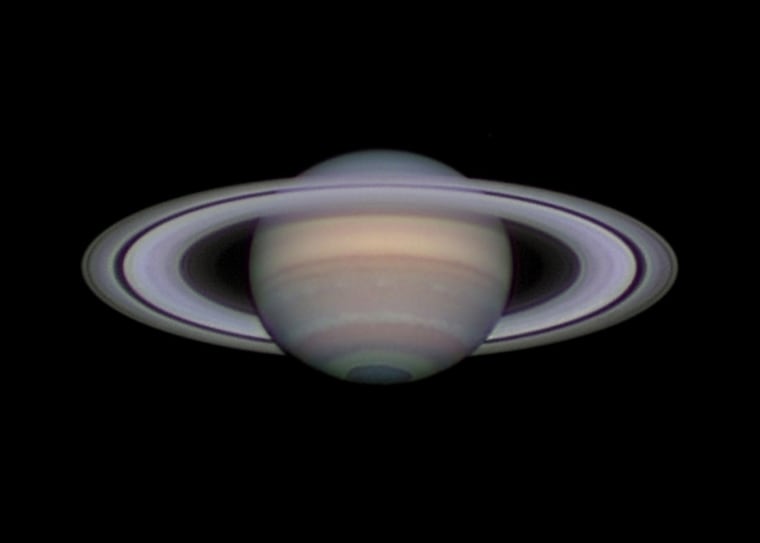
Saturn's glory
"Saturn at Opposition System" by Damian Peach of the U.K. was "highly commended" in the Our Solar System category. This incredibly sharp portrait brilliantly captures the jewel of our solar system, revealing the subtle banding around the orb that results from the planet’s weather.
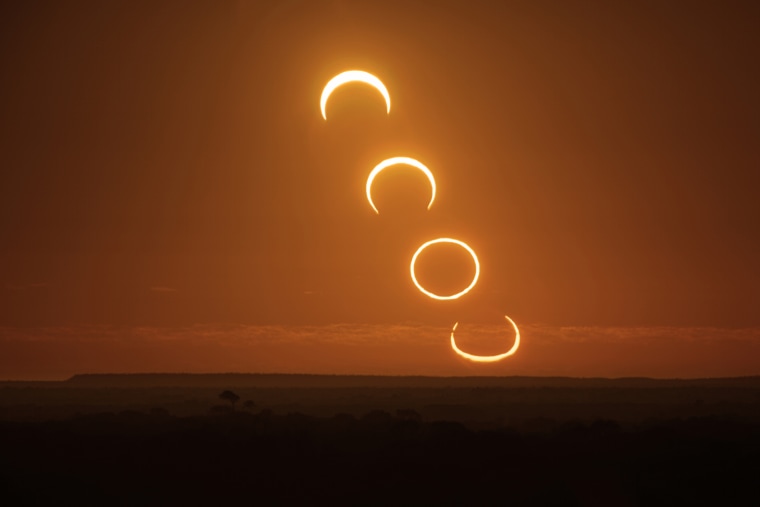
Ring of fire
"Ring of Fire Sequence" by Jia Hao of Singapore was "highly commended" in the Our Solar System category. This composite image shows the progress of an annular solar eclipse in May 2013. Annular eclipses occur when the moon passes precisely over the sun, at a point in the moon's orbit when its angular size is not great enough to cover the sun's disk completely. The result is the "ring of fire" effect you see here. Close to the horizon, the distorting effects of Earth’s atmosphere can also be seen.
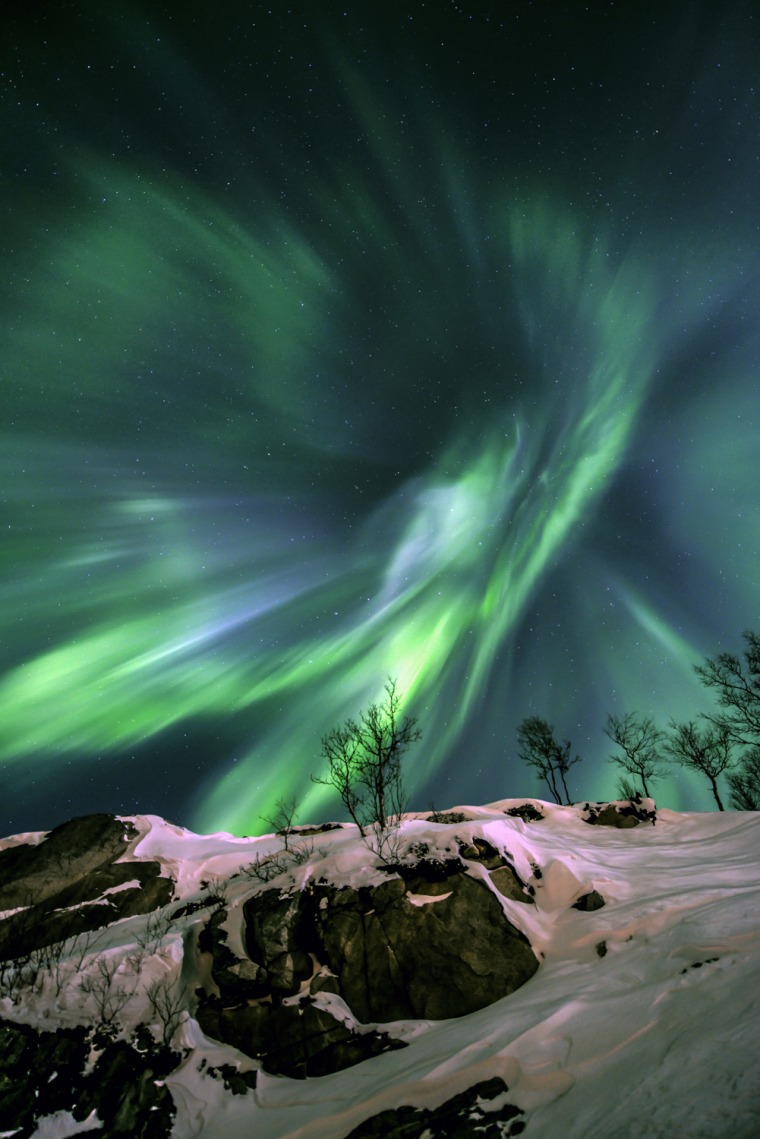
Green energy
"Green Energy" by Fredrik Broms of Norway was the runner-up in the Earth and Space category. The shifting northern lights can take on many shapes and forms as they are molded by Earth’s complex magnetic field. Sheets and planes of glowing gas appear to be twisted into a giant auroral vortex above Grøtfjord in Norway.
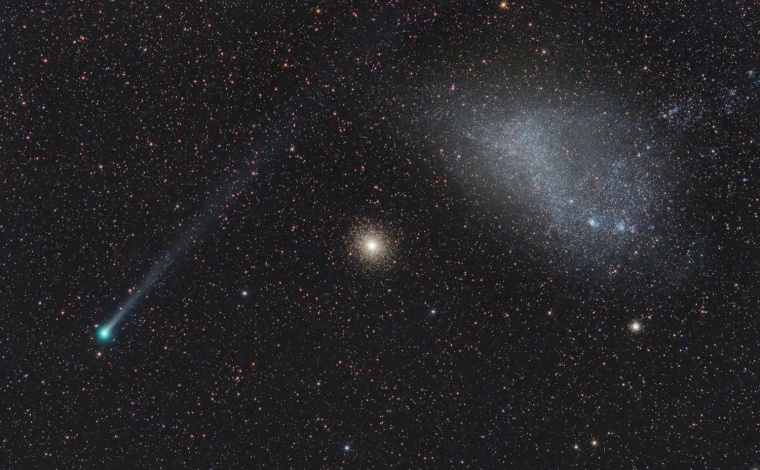
Cosmic alignment
"Cosmic Alignment: Comet Lemmon, GC 47 Tucanae, and the SMC" by Ignacio Diaz Bobillo of Argentina was "highly commended" in the Our Solar System category. At a glance, this image may seem like a post-processed montage of objects from three separate images: Comet Lemmon, the globular cluster known as GC 47 Tucanae, and a satellite galaxy that is called the Small Magellanic Cloud. However, the truth is that they were all captured together, providing the viewer with an amazing view of our solar system, galaxy and universe.
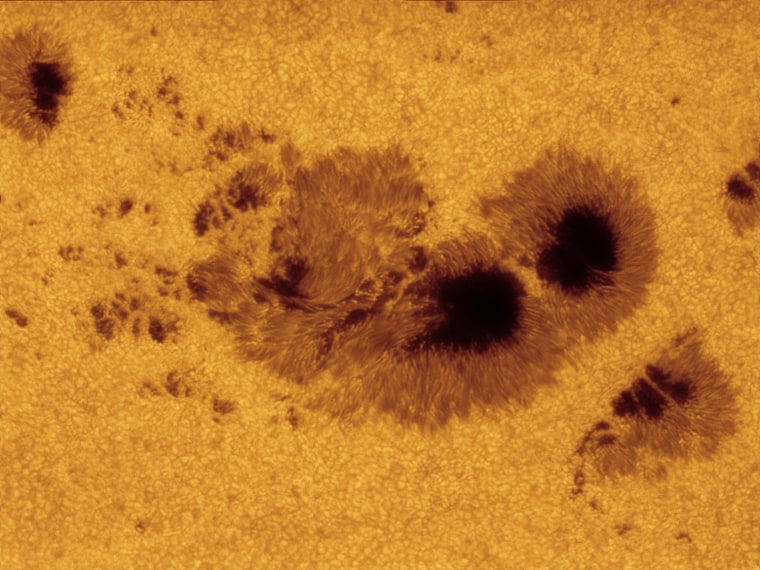
Magnetic maelstrom
"Magnetic Maelstrom" by Alan Friedman of the U.S. was the runner-up in the Our Solar System category. This image captures rich details of sunspots and the surrounding solar surface. The darkest patches or "umbrae" in this image are each about the size of Earth, with the entire region of magnetic turmoil spanning the diameter of 10 Earths.
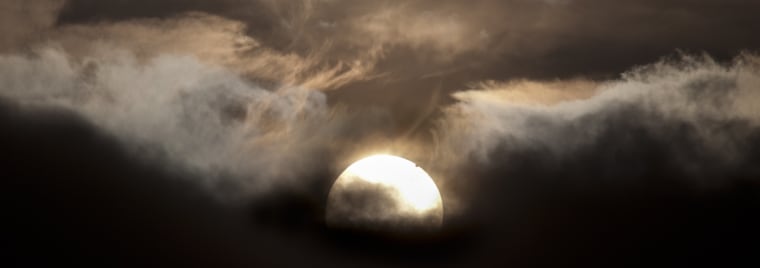
Dot on the sun
"Venus Transit, Foxhunter’s Grave, Welsh Highlands" by Sam Cornwell of the U.K. was the winner of the Sir Patrick Moore Prize for Best Newcomer. For those lucky enough to see it, the transit of Venus was one of the astronomical highlights of 2012. Cornwell used special photographic filters to capture the final moments of the transit through a gap in the clouds over Wales. Venus' dark spot can be seen just on the sun's upper right edge.
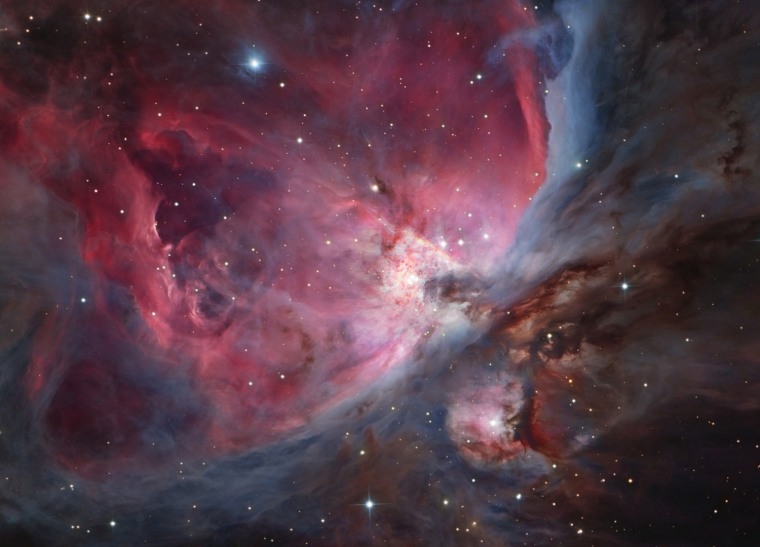
Stellar nursery
"The Trapezium Cluster and Surrounding Nebulae" by László Francsics of Hungary was honored as the Robotic Scope Image of the Year. The Orion Nebula, with the Trapezium Cluster at its heart, is often described as a "stellar nursery" because of the huge number of stars which are being created within its clouds of dust and glowing gas.
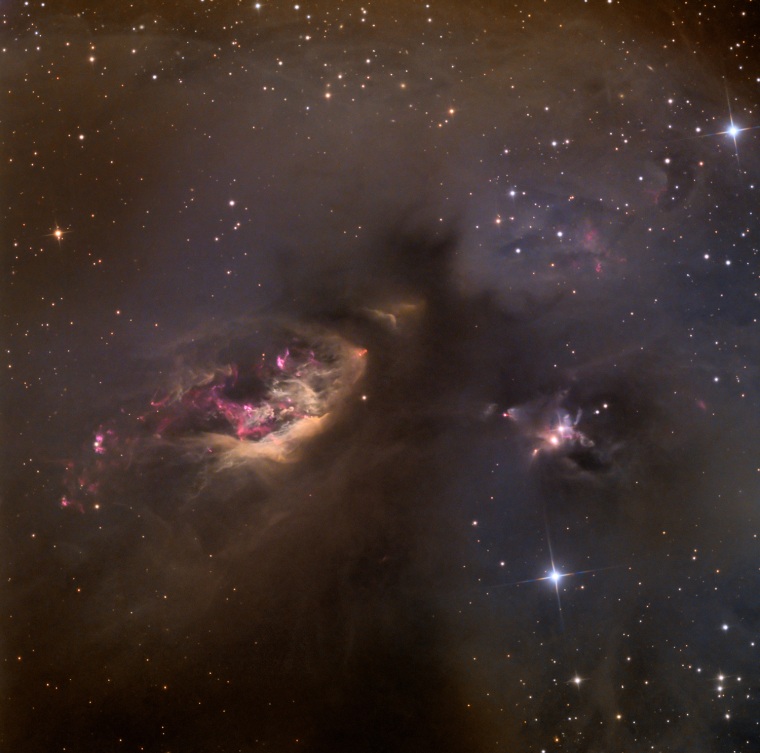
Celestial impasto
"Celestial Impasto: Sh2 - 239" by Adam Block of the U.S. was the winner in the Deep Space category. Structures like this often seem unchanging and timeless on the scale of a human lifetime. However, they are fleeting and transient on astronomical timescales. Over just a few thousand years, the fierce radiation from the stars in this nebula will erode the surrounding clouds of dust and gas, radically altering its appearance. The photo's title, "Celestial Impasto," refers to a painting technique in which the pigment is laid onto the canvas in thick smears.

Moon silhouettes
"Moon Silhouettes" by Mark Gee of Australia was the winner of the "Special Prize: People and Space." This is a deceptively simple shot of figures silhouetted against a rising moon. By photographing the people on the observation deck from a great distance, Gee has emphasized their tiny scale compared to the grandeur of our natural satellite.
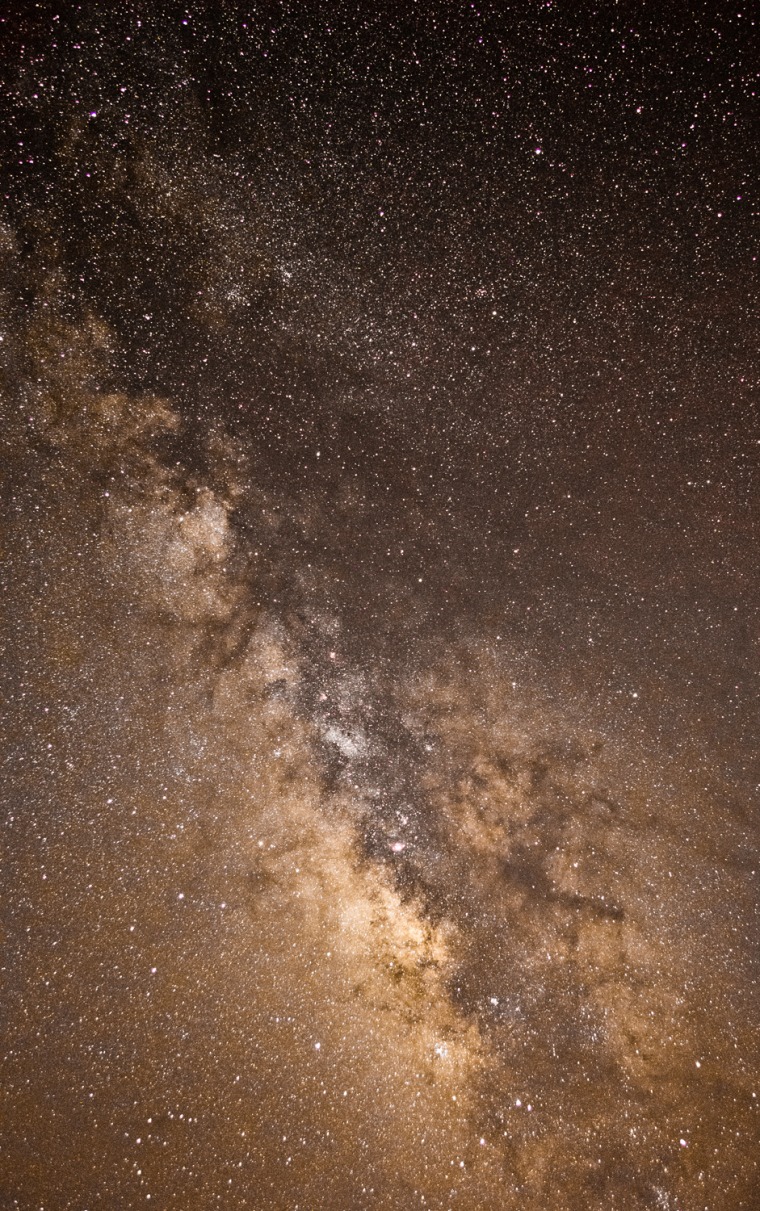
Milky Way marvels
"The Milky Way Galaxy" by 14-year-old Jacob Marchio of the U.S. was the winner in the Young Astronomy Photographer of the Year. Marchio has focused on one of the most spectacular vistas looking toward the very center of the galaxy, capturing the glow of tens of billions of stars painting streaks of light across the sky. Dark lanes of dust and gas are seen in silhouette against the brilliance of the Milky Way’s dense bulge, while myriad clusters and star nurseries are sprinkled across the scene.
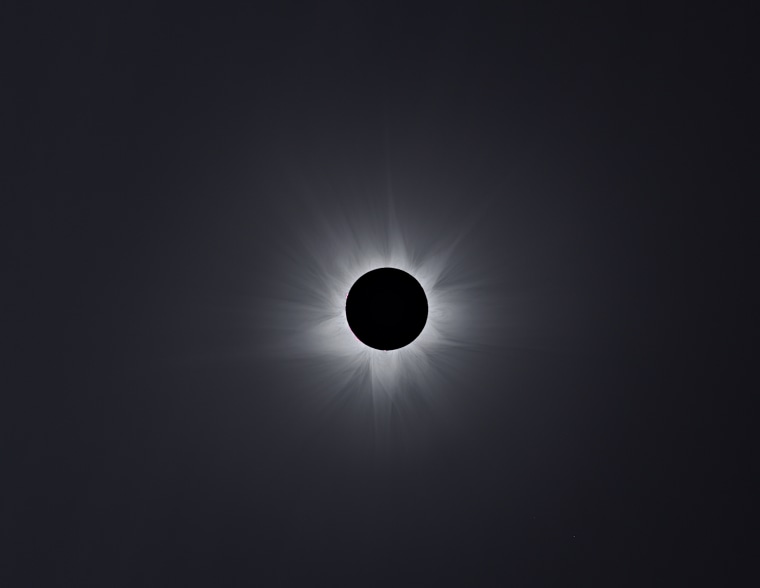
Australian totality
"Corona Composite of 2012: Australian Totality" by Man-To Hui of China was the winner in the Our Solar System category. This image of a total solar eclipse in November 2012 is a demonstration of both precision timing and rigorous post-processing. It gives the viewer a window onto the elusive outer atmosphere of the sun – the corona.
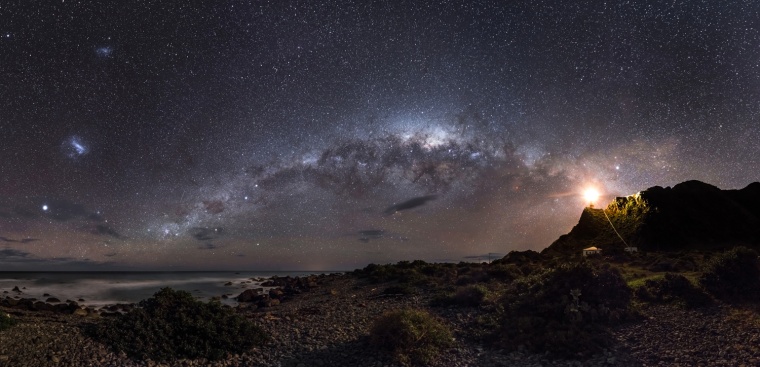
And the winner is ...
"Guiding Light to the Stars" by Mark Gee of Australia was the winner in the Earth and Space category and the overall winner of the Astronomy Photographer of the Year competition.The central regions of the Milky Way galaxy, 26,000 light-years from Earth, appear as a tangle of dust and stars in the central part of the image. Two even more distant objects are visible as smudges of light in the upper left of the picture. These are the Magellanic Clouds, two small satellite galaxies in orbit around the Milky Way.
See the winning pictures from 2012
More from the Royal Observatory